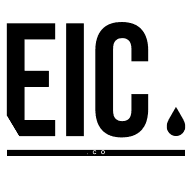How Do You Handle the Pressure of Tight Deadlines?
In the fast-paced world of publishing, editors and directors are often faced with the challenge of balancing tight deadlines and high-quality content. From prioritizing quality with clear editorial standards to delivering value over merely meeting deadlines, we've gathered twelve expert insights. Here’s how industry leaders handle the pressure while upholding their publication's standards.
- Prioritize Quality with Clear Editorial Standards
- Plan Ahead and Stay Proactive
- Focus on Progress Over Perfection
- Use an Assembly-Line Approach
- Implement Collaborative and Efficient Strategies
- Divide Tasks and Communicate Clearly
- Prioritize and Schedule Content
- Streamline Processes with Technology
- Manage Time and Prioritize Effectively
- Tailor Personalized Strategies for Workflow
- Maintain Focus on Quality Amid Deadlines
- Thrive Under Pressure with Focus and Systems
Prioritize Quality with Clear Editorial Standards
For me, quality content will always be a priority. But I understand the pressure that comes when you have a looming deadline and the content just isn't there yet. I've found that it helps when you set clear editorial standards from the start and build frameworks and playbooks to help writers adhere to that quality. If you don't have that set from the start, then the content creation and editing process will take so much longer.
When you reach that point where you have to choose between meeting a deadline and meeting quality standards, you need to decide what is the priority at that moment. You should also consider how far away the content is from the editorial standards. Is it such terrible quality that it would be detrimental to the publication? Or is it only a few edits shy of meeting the standard (i.e., good enough, but not excellent)?

Plan Ahead and Stay Proactive
Working for a monthly magazine, I am far too familiar with the stress of having tight deadlines. That said, because we are given a set list of themes to center each issue's content around, I am able to start the planning process well in advance. Once I've narrowed down my top choices of businesses, non-profits, and individuals to interview per the theme, I give them ample time to fit me (and potentially our photographer) into their busy schedules.
As we all know, though, not everything can always go perfectly to plan, so I make sure to have alternate ideas in my back pocket. Each month is a learning experience consisting of our team finding more efficient ways to tackle deadlines and reduce the feeling of overwhelm that comes from last-minute tasks. When push comes to shove, it's critical to stay calm, focused, and confident that we're going to get things done.
For anyone interested in pursuing a career as an editor, know that you should be proactive, not reactive. It may take some time to start anticipating challenges and opportunities within your niche, but by adopting a problem-solving mindset and opening yourself up to being flexible, you can certainly meet deadlines without sacrificing quality.
Focus on Progress Over Perfection
Meeting a deadline can often be the ultimate test. However, it's crucial to keep the end goal in sight and not get bogged down by minor details. Prioritize progress over perfection. I've found that outlining the main idea and creating a rough draft helps establish the storyline's foundation. Once that's in place, you can refine your work, injecting it with your unique flair and style. Until that moment, the true nature of your creation remains uncertain.
Use an Assembly-Line Approach
Tight deadlines can be difficult for writers and editors to manage, especially when they overlap. The best way I've found to produce multiple pieces of excellent content on a short turnaround is to focus on one task or part of the editorial process at a time.
For instance, my agency handles several batches of assignments at a time for different digital publishers, so we break up the work into stages: outline, write, edit. We encourage our team to outline all their articles, then focus on the writing, then edit them all.
This "assembly-line" approach helps us make progress on multiple articles concurrently while allowing our team to get into a productive groove with one type of task. Editing everything in a batch (typically by client) also helps in terms of ensuring quality and meeting the publication's standards, since our brains are attuned to that particular client's style guide in the moment.
We often find this method is more efficient and yields better results than trying to sit down and knock out an entire piece start to finish before tackling the next.

Implement Collaborative and Efficient Strategies
In our case, managing the pressure of tight deadlines without compromising on content quality involves a multifaceted approach. First, prioritizing tasks based on their urgency and significance ensures that critical content receives immediate attention. We also leverage a collaborative team environment, where tasks are distributed according to individual strengths and expertise, thus enhancing efficiency and output quality. Additionally, we maintain open lines of communication with all stakeholders to set realistic expectations and adapt to any unforeseen challenges. Incorporating these strategies helps us uphold our publication's standards, even under the most demanding timelines.
Furthermore, we continually strive to improve our processes and workflows to optimize efficiency without sacrificing quality. This includes implementing tools and technologies that facilitate faster content creation, editing, and review processes. We also conduct regular training sessions to enhance our team's skills and ensure that everyone is up-to-date with industry best practices.

Divide Tasks and Communicate Clearly
In my experience, managing the pressure of tight deadlines while upholding publication standards necessitates effective time management and prioritization. I ensure to divide tasks into smaller, more manageable segments, allowing me to allocate adequate time for research, writing, editing, and revisions. Additionally, maintaining open communication with my team enables us to set clear expectations and address potential challenges proactively. Amidst tight deadlines, I prioritize quality over quantity, striving to deliver thoroughly researched and carefully crafted content that aligns with our publication's standards. Employing various tools and techniques, such as outlining, drafting, and proofreading, aids in maintaining accuracy and coherence while meeting urgent timelines. Ultimately, maintaining organization, transparent communication, and a steadfast commitment to quality are pivotal strategies for successfully managing tight deadlines in the publishing realm.

Prioritize and Schedule Content
With new listings coming in and clients expecting quick turnarounds, it can be extremely challenging to balance the pressure of deadlines with producing high-quality content that meets my brokerage's standards. One of the key strategies I use to handle tight deadlines is prioritizing tasks. This involves identifying which tasks are urgent and require immediate attention, and which ones can be pushed back. By prioritizing tasks, I am able to focus on the most important ones first, ensuring that they are completed on time and meet the publication's standards.
In addition to prioritizing tasks, creating a schedule is another crucial aspect of meeting tight deadlines while maintaining quality. I usually break down my tasks into smaller, manageable chunks and allocate specific time slots for each task. This helps me stay on track and ensures that I am able to complete my tasks within the given deadline.
Time management is also key when it comes to meeting tight deadlines. This involves setting realistic timelines for each task, avoiding distractions while working, and using tools such as project management software to track progress. By effectively managing my time, I am able to meet deadlines while also producing content that meets the publication’s standards.
Another helpful strategy is collaborating with team members. In a fast-paced industry like real estate, it's important to work closely with other agents and support staff in order to meet tight deadlines. By delegating tasks and working together, we are able to divide the workload and produce high-quality content in a timely manner.

Streamline Processes with Technology
Our streamlined process guarantees that we stick to schedules, and our finished product densities keep us up to speed in meeting deadlines. An in-depth editorial calendar keeps our goals synchronized with deadlines. Technology keeps our fingers on the pulse of publishing through effective use of content management and related collaboration tools. Precise rules guide product reviews and submissions. When time is of the essence, maintaining tight in-house communication keeps everyone on track.

Manage Time and Prioritize Effectively
In my experience, managing the pressure of tight deadlines while upholding publication standards necessitates effective time management and prioritization. I ensure to divide tasks into smaller, more manageable segments, allowing me to allocate adequate time for research, writing, editing, and revisions. Furthermore, maintaining open communication with my team enables us to set clear expectations and address potential challenges proactively. Amidst tight deadlines, I prioritize quality over quantity, striving to deliver thoroughly researched and carefully crafted content that aligns with our publication's standards. Employing various tools and techniques, such as outlining, drafting, and proofreading, aids in maintaining accuracy and coherence while meeting urgent timelines. Ultimately, maintaining organization, transparent communication, and a steadfast commitment to quality are pivotal strategies for successfully managing tight deadlines in the publishing realm.

Tailor Personalized Strategies for Workflow
In my experience, managing the pressure of tight deadlines while maintaining publication standards requires personalized strategies tailored to my workflow. I find it essential to break down tasks into smaller, manageable segments, enabling me to allocate sufficient time for research, writing, editing, and revisions. Additionally, open communication within our team is crucial for setting clear expectations and addressing any potential challenges early on. When faced with tight deadlines, I prioritize quality over quantity, ensuring that the content I deliver is meticulously crafted and aligns with our publication's standards. Employing various tools and techniques, such as outlining and proofreading, helps me maintain accuracy and coherence while meeting urgent timelines. Ultimately, drawing from my personal journey, I believe that staying organized, communicating effectively, and maintaining a focus on quality are key strategies for successfully navigating tight deadlines in publishing.

Maintain Focus on Quality Amid Deadlines
In my experience, managing the pressure of tight deadlines while upholding publication standards necessitates effective time management and prioritization. I ensure to divide tasks into smaller, more manageable segments, allowing me to allocate adequate time for research, writing, editing, and revisions. Furthermore, maintaining open communication with my team enables us to set clear expectations and address potential challenges proactively. Amidst tight deadlines, I prioritize quality over quantity, striving to deliver thoroughly researched and carefully crafted content that aligns with our publication's standards. Employing various tools and techniques, such as outlining, drafting, and proofreading, aids in maintaining accuracy and coherence while meeting urgent timelines. Ultimately, maintaining organization, transparent communication, and a steadfast commitment to quality are pivotal strategies for successfully managing tight deadlines in the publishing realm.

Thrive Under Pressure with Focus and Systems
Tight deadlines are part of the job. I thrive under pressure. It's about staying focused, prioritizing tasks, and trusting your instincts.
Quality is always the top priority. No exceptions. I'd rather push back on a deadline than sacrifice the integrity of the content.
Communication is key. Keeping stakeholders in the loop helps manage expectations. Transparency builds trust.
When crunch time hits, I rely on my systems and processes. They keep me efficient without cutting corners.
At the end of the day, it's about delivering value to the audience. Deadlines are important, but meaningful, impactful content is what really matters.



